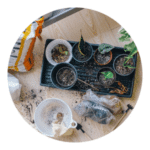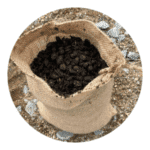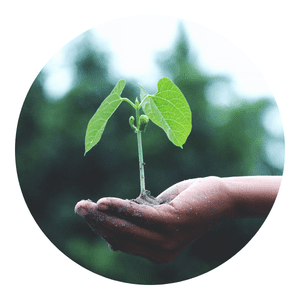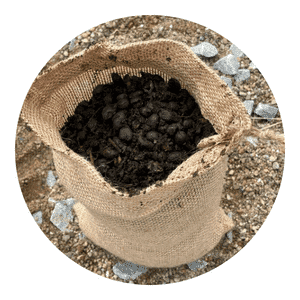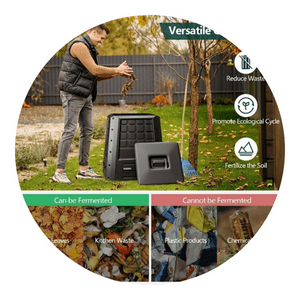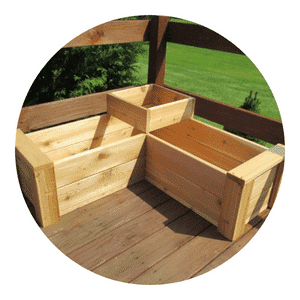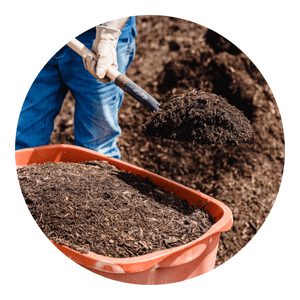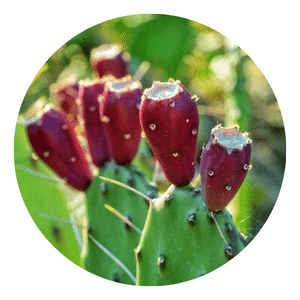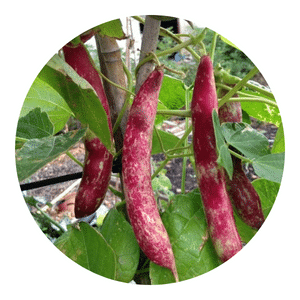How to grow organic Banana
Banana is one of the most popular fruit in the world. It is not only delicious but also very nutritious.
Banana is a good source of dietary potassium, vitamin C, dietary fiber and vitamin B6. It can also help you regulate blood sugar levels.
If you want to grow banana, here is what you need to do.

Banana Menu
Why grow Banana?
Bananas are one of the most popular fruits in the world. They are also one of the easiest fruits to grow.
Bananas are a great source of vitamin C, dietary fiber, and potassium. They can be grown in a wide range of climates and soils.
Bananas are a tropical fruit that is native to Southeast Asia. The plant belongs to the Musaceae family, which includes plants such as plantains and abaca ( Manila hemp).
There are more than 1,000 varieties of bananas worldwide. The most common varieties include Cavendish, Lady Finger, and Plantain.
Banana plants can reach up to 20 feet (6 meters) in height and have large leaves that can grow up to 3 feet (1 meter) long.
The flowers grow in clusters at the end of the stem and develop into bunches of bananas.
Get a Banana tree
Banana trees are a tropical plant that can add a touch of the exotic to your home.
They are easy to care for and can provide you with fresh bananas.
Here’s what you need to know to grow your own banana tree:
1. Banana trees need full sun and well-drained soil. If you live in a colder climate, you can grow banana trees in containers and bring them indoors during the winter months.
2. Banana trees are fast growers and can reach up to 20 feet tall.
When growing banana trees in containers, be sure to choose a large pot so the roots have enough room tospread out.
3. Water your banana tree regularly, especially during the warmer months. Allow the top inch or two of soil to dry out between watering sessions.
Plant the Banana tree
Banana trees are not only easy to grow, but they’re also fun! Here’s how to get started:
1. Choose a spot in your yard that gets plenty of sun and has well-drained soil.
2. Dig a hole that’s twice the size of the tree’s root ball.
3. Gently remove the tree from its container and place it in the hole.
4. Fill in the hole with soil, tamping it down around the tree’s roots.
5. Water the tree deeply until the soil is saturated.
6. Mulch around the base of the tree to help retain moisture and keep weeds at bay.
7. Fertilize monthly with a organic fertilizer during the growing season (spring through fall).
Organic Fertilize
Organic fertilizer is the best way to fertilize a banana tree.
Banana trees are very sensitive to chemicals and will not produce as much fruit if they are not properly fertilized.
There are many different organic fertilizers on the market, so it is important to choose one that is right for your tree.
Some organic fertilizers can be found at your local nursery or garden center.
When applying organic fertilizer to a banana tree, it is important to follow the directions on the package.
Typically, you will need to apply the fertilizer every two weeks during the growing season.
Apply the fertilizer around the base of the tree, being careful not to get any on the leaves or roots.
Water the tree well after applying fertilizer to help it absorb nutrients.
Bananas so perfect, so rippening sweet, Organic and grown with no chemicals and heat. Nature takes it course, for natures delight, Fertiliyzed the soil to ensure a thriving bright. A well tended tree is a sign of health, Pollinated every day by the friendly bee's stealth. Harvested by hand with reverent care, Eat fresh or bake for that sinfully delish fare! The results are in - organically grown fruits win! Your family with thanks will bless you once again.
Chappy The Gardener
Prune the Banana tree
When it comes to growing banana trees, pruning is an important part of the process.
By carefully pruning the tree, you can encourage new growth and ensure that the tree stays healthy. Here are some tips on how to prune your banana tree.
First, you’ll need to remove any dead or dying leaves from the tree.
These leaves can provide a home for pests and diseases, so it’s important to get rid of them. You can also remove any leaves that are damaged or diseased.
Next, you’ll need to thin out the foliage. This will help ensure that air can circulate around the tree and prevent disease.
You should also trim back any branches that are crossing over each other or rubbing against each other.
Finally, you’ll need to cut back the main stem of the tree by about one-third.
Types of banana
Bananas are a type of fruit that come in many different shapes and sizes.
There are over 1,000 different types of bananas in the world.
Some of the most popular types of bananas are the Cavendish, Plantain, and Red Bananas.

Cavendish

Pisang Raja

Red

Burro

Barangan

Goldfinger
Can bananas be grown at home?
Yes, bananas can be grown at home. All you need is a banana plant and some patience.
Bananas are a tropical fruit and need warm temperatures to grow. If you live in a colder climate, you can grow your banana plant indoors.
Banana plants can be purchased from most garden centers. Once you have your plant, pot it in rich soil and place it in a sunny spot.
Water regularly and fertilize monthly. Your banana plant will take about 9 months to produce fruit.
Harvest your bananas when they are ripe and enjoy! Growing bananas at home is a fun and rewarding experience.
How long does it take to grow a banana?
Bananas are a popular fruit that is enjoyed by people all over the world.
They are easy to grow and can be done so in a variety of ways.
The most common method is to grow them in soil, but they can also be grown in pots.
Bananas typically take about 9-12 months to grow from seed to harvest.
However, there are some varieties that can take up to 18 months to mature.
The type of banana you are growing, as well as the climate you’re growing it in, will affect how long it takes to produce fruit.
If you’re interested in growing bananas, there are a few things you need to do to get started.
First, you’ll need to purchase some quality banana seeds or plants.
Once you have your materials, the next step is to find a suitable location for your plants.
Is banana hard to grow?
Banana is not difficult to grow, but it does require some effort.
The most important thing to remember when growing banana is to provide plenty of water and fertilizer.
Banana also prefers a warm climate, so growers in colder regions may need to take extra care to ensure their plants stay warm enough.
With proper care, however, anyone can successfully grow banana.
How many years does a banana tree live?
A banana tree can live for up to 20 years, but it is more common for them to be between 10 and 15 years old.
The average lifespan of a banana tree is around 12 years.
However, some Banana trees have been known to live for over 100 years.
The oldest recorded Banana tree was grown in India and was over 200 years old when it was cut down.
Do banana trees need a lot of water?
Banana trees are one of the most popular fruit trees to grow in the home landscape.
They are fast-growing, produce delicious fruit, and require little care.
However, banana trees do need a lot of water. They should be watered deeply and regularly during their growing season.
Mulching around the base of the tree will help to conserve moisture and keep the roots cool.
How to grow bananas hydroponically?
Bananas are a delicious and nutritious fruit that can be enjoyed all year round.
Growing bananas hydroponically is a great way to enjoy fresh bananas even if you don’t have a lot of space.
Here’s how to grow bananas hydroponically:
1. Start with a sterile growing medium and make sure it is well aerated. Coconut coir or perlite are both good choices for growing banana plants.
2. Suspend the roots of your banana plant in the growing medium using netting or another support system.
3. Keep the roots moist but not waterlogged by misting them with water or using a drip irrigation system.
4. Provide plenty of light for your banana plants – they need at least 12 hours of light per day. Fluorescent lights are a good option for indoor growing.
How to grow banana in pots?
Banana trees are a tropical plant that can be grown in pots.
If you live in an area with a warm climate, you can grow banana trees in pots outdoors. If you live in a cooler climate, you can grow banana trees in pots indoors.
To grow banana trees in pots, you will need to purchase a banana tree from a nursery or garden center. You will also need to purchase potting soil and fertilizer.
Before planting the banana tree in the pot, make sure that the pot has drainage holes.
Plant the tree in the potting soil and water it regularly. When the tree reaches 6-8 feet tall, you will need to stake it so that it doesn’t fall over.
Fertilize the banana tree every two weeks during the growing season.
Once the tree starts to produce bananas, wait until they are ripe before harvesting them.
Plant information
Organic growing conditions for banana:
Full sun, lots of water, under the shaft of an air conditioner or gutter
How to get a banana for organic growing:
Cutting, seedling
Disadvantages of growing a banana:
Need a lot of water, the fruit grows at once
Irrigation conditions in banana cultivation:
Multiple irrigation
Light conditions in optimal condition for growing a banana:
Full sun
Recommended date for planting a banana:
Spring summer
Pests of the banana plant:
worms
Is it worth buying a complex variety of banana:
No
Banana pruning date:
All year round
Banana pruning:
A banana grows a lot of twigs, so they should be pruned and thinned so that they do not interfere with the main “stem” to bear fruit. Too many spikes without proper fertilization or a sufficient amount of water will result in fruitlessness. When pruning the banana herb, leave the stalk above the ground, which will return to the soil the minerals it needs when growing it.
Banana plant size:
2-6 m and the leaves can reach up to 4 m.
Banana growth rate:
Rapid growth
You can grow a banana at home:
No
You can also grow a banana in a pot:
Yes
Flowering plant
Banana flowering date:
One to two years from the moment of planting
General information about the banana flower:
The banana flower grows in groups of flowers that are located on the main stem of the plant
Dilution of banana blossom:
The banana bush thins its flowers if it does not have enough watering
fruit:
Date of banana yield:
About two months after flowering
Pests in growing banana fruit:
Worms, lack of irrigation (lack of irrigation causes the fruit peel to explode) and fruit bats.
What can be done with quantities of banana fruit?
Eat, cakes, freeze, dry, juice and more
Work requirements for banana fruit:
Wrapping the fruit by jute cloth
How long does it take for the banana to bear fruit?
One or two years
Banana Distinction:
Some banana varieties require differentiation
Plant varieties:
Yellow Banana – There are a variety of yellow banana varieties, from dwarf species to extremely large species
Platano Banana – A green to yellow banana used for frying
Red banana – a red rind on the inside is yellow and sometimes with a pinkish tinge on the yellow
Blue banana – more intended for cooking and frying, its color is blue on the outside and yellow on the inside
Latin Banana:
Musa
Other banana names:
Is it worth growing a banana:
Not recommended for growth due to high water consumption. It is cheaper to buy bananas than to grow them. If the choice is a crop then it is better to grow an esoteric variety like banana plantain or red.
Vegetative reproduction
How to perform vegetative reproduction in a banana:
Rhizome
Date of vegetative breeding for banana cultivation:
All year round, recommended in the spring months
Duration of root growth time in growing vegetative reproduction in banana:
Several weeks
Through the treatment of vegetative reproduction in bananas:
Banana grass grows vegetative tribes All that is left to do is gently remove them from the soil along with as many roots as possible without harming the mother plant.
If you like a banana it is recommended to grow:
Wumpy, Jack Prutt, Dorian
In conclusion,organic bananas are a great way to improve your health and the environment.
They are packed with nutrients and antioxidants, and they are grown without the use of harmful chemicals.
If you’re looking for a delicious and healthy snack, look no further than the organic banana.
Click To Grow
Helps Us Grow – Share If You Like


